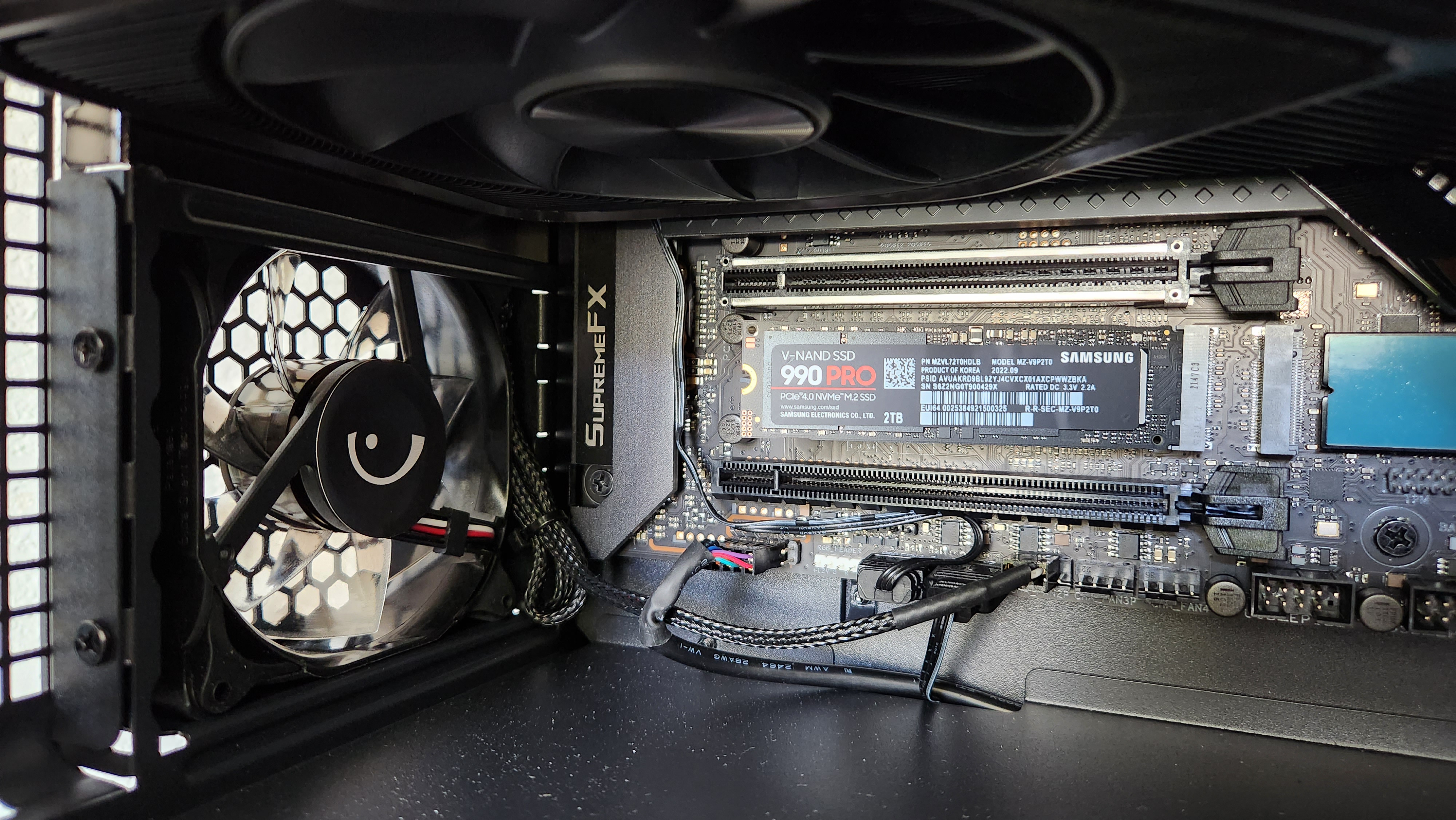Windows Central Verdict
With the release of the 990 Pro, Samsung took the best features from its 980 Pro SSD, beloved by scores of gamers, and made them better. The result is the world's fastest PCIe Gen 4 drive with solid thermal management and plenty of storage configurations that will satiate the demand of hard-core gamers, data scientists, video and 3D artists, and creative professionals.
Pros
- +
Fast, chart-topping performance
- +
Available with or without heatsink
- +
Terrific warranty options
- +
Heatsink version comes with RGB lighting
- +
Heatsink version can be used on PCs and consoles
Cons
- -
No PCIe Gen 5 support
- -
More expensive than other PCIe Gen 4 drives
Why you can trust Windows Central
Samsung’s 980 PRO solid-state drive has been a favorite among gamers and a top pick on workstations. Delivering solid read and write performance, plenty of storage configurations to fit your budget, and solid quality that promises data integrity, the 980 Pro is getting a solid upgrade this year in the form of Samsung’s latest flagship SSD: The Samsung 990 Pro.
This year, the 990 Pro delivers everything that gamers, data scientists, and creative professionals love about last generation’s 980 Pro and improves on it with speed. Lots of speed, to be exact, making it a worthwhile upgrade for gamers.
Samsung 990 Pro: Specifications
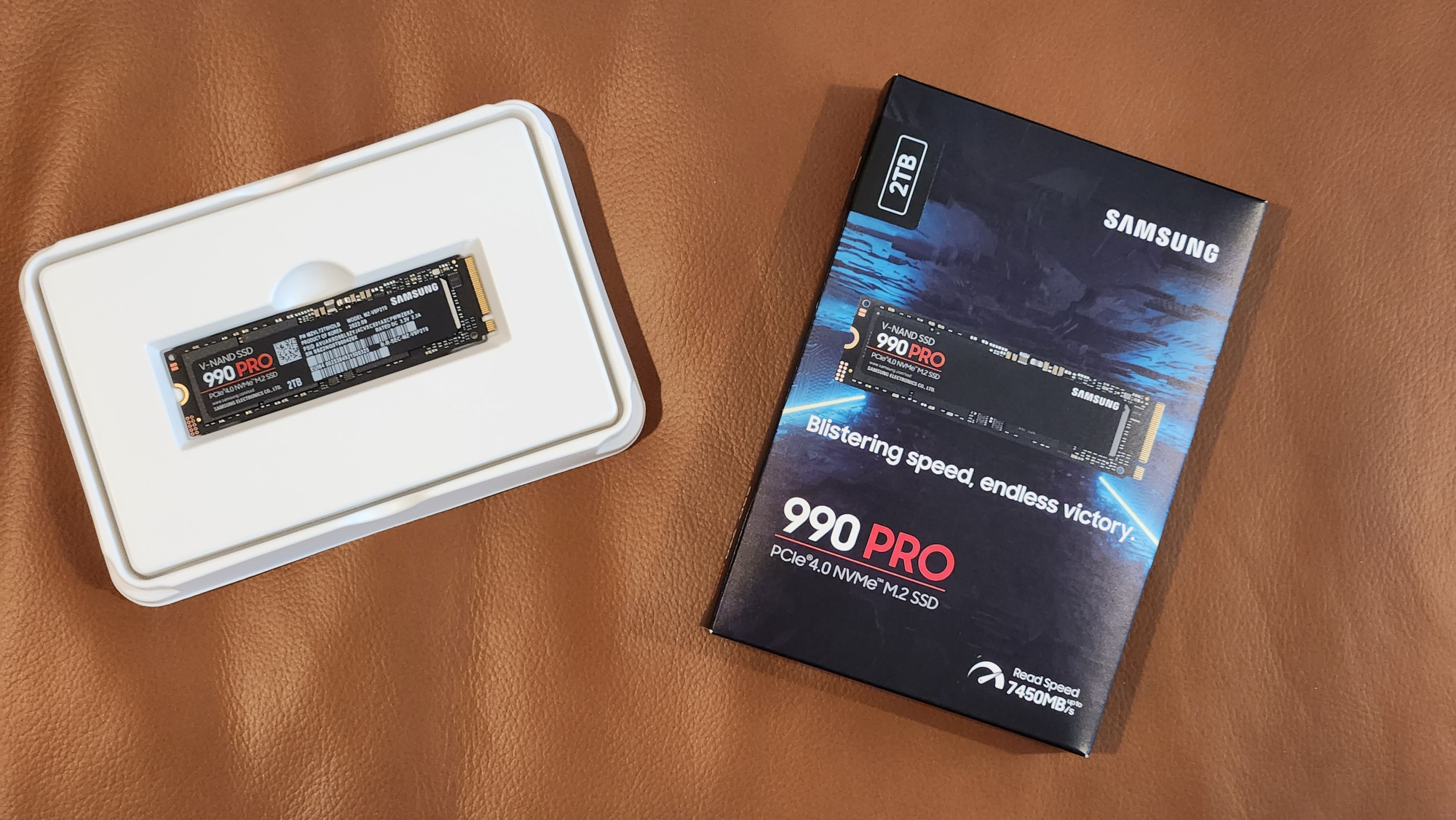
Samsung's new 990 Pro flagship M.2 NVMe PCIe Gen 4 solid-state drive is available in a number of configurations starting at 1TB of storage and topping out with 4TB. The company offers the SSD in a standard package for laptops and desktops as well as variants with heatsinks for gaming rigs and consoles.
| Row 0 - Cell 0 | Specifications |
| Capacity | 1TB, 2TB, 4TB, 1TB with Heatsink, 2TB with Heatsink |
| Form factor | M.2 2280 |
| DRAM cache memory | 1GB LPDDR4 (on 1TB), 2GB LPDDR4 (on 2TB) |
| Interface | PCIe 4.0 x4, NVMe 2.0 |
| Sequential read | 7,450 MB/s |
| Sequential write | 6,900 MB/s |
| Random read | Up to 1,400K IOPS |
| Random write | Up to 1,550K IOPS |
| NAND | Samsung V-NAND TLC |
| Controller | Samsung proprietary Pascal Controller |
| Warranty | 5-year limited |
| Microsoft DirectStorage API support | Yes |
| RGB lighting | Only on Heatsink variants |
| Dimensions | Standard: 80.0 x 22.0 x 2.3mm |
| Row 15 - Cell 0 | Heatsink: 80.09 x 24.3 x 8.2mm |
| Power consumption | Up to 55mW (2TB) idle; 5.8W active read; 5.1W active write |
| Temperature | Operating: 0 to 70 degrees Celcius |
| Row 18 - Cell 0 | Non-operating: -40 to 85 degrees Celcius |
For our review, Samsung sent us the 2TB version of the standard M.2 2280 990 Pro. We did not test the Heatsink variant for our review.
Prices start at $169 for a 1TB 990 Pro SSD. A 2TB configuration is available for $289.
Versions with a heatsink come in at a slight premium. The 1TB 990 Pro with Heatsink will retail for $189, or $20 more than the standard version without a heatsink. The larger capacity 2TB 990 Pro with Heatsink is priced at $309.
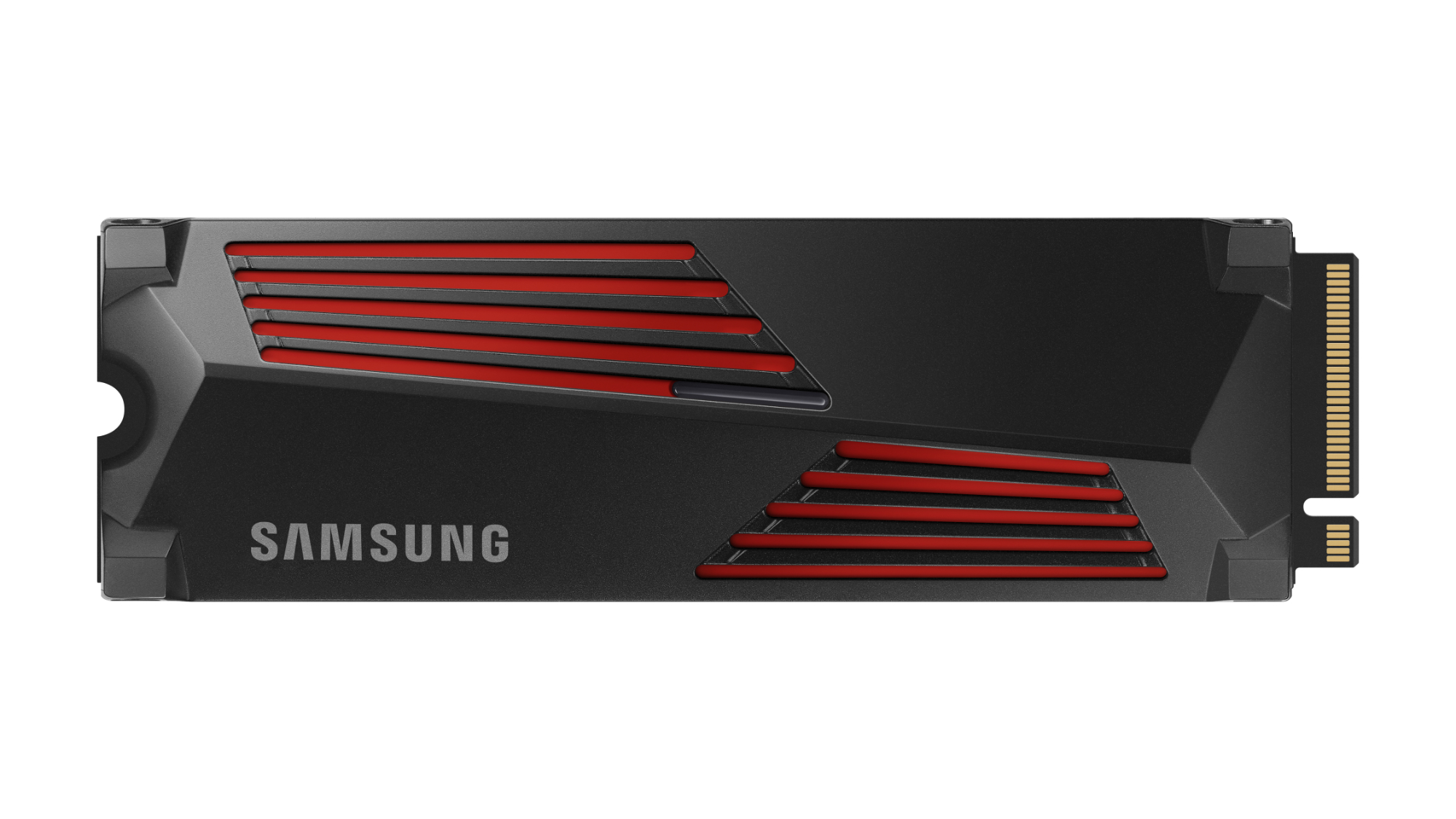
All versions will be available for pre-orders starting November 1 directly from Samsung. All variants are backed by a limited five-year warranty.
Samsung will also offer 4TB versions of the 990 Pro, but the expanded capacity drive won't be ready until 2023.
Samsung 990 Pro: Performance
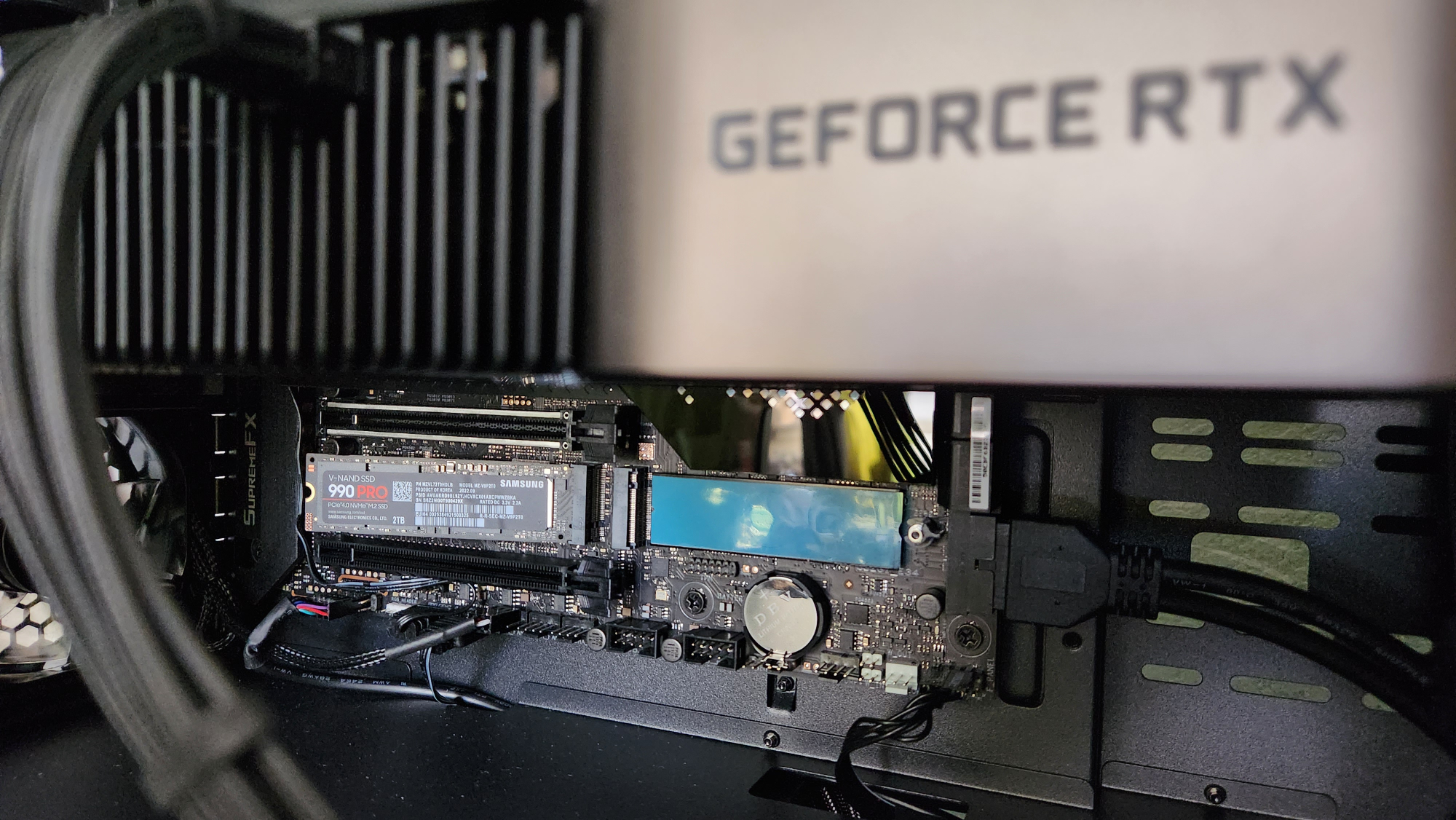
On paper, the biggest downside to the 990 Pro is its continued reliance on the now-aging PCIe Gen 4 specifications. Prior to the launch of the 990 Pro, there was hopeful anticipation that Samsung would make the leap to the newer PCIe Gen 5 standard for its latest flagship SSD, but that wasn’t the case. Still, Samsung managed to squeeze a lot of extra performance out of the Gen 4 technology, and the strategy to stay loyal to a tried and tested standard may not be all entirely bad news despite Gen 5’s promise of delivering twice the speeds.
For starters, this means that gamers on older rigs would be able to experience some of the speed benefits of the new 990 Pro memory. The move to remain on the Gen 4 standard also likely means that Samsung is able to better control pricing and manage yields.
With the PCIe Gen 4-based 990 Pro, Samsung promised read and write speeds of 7,450 MBps and 6,900 MBps, respectively, and random performance of up to 1,550K IOPS, a 55% improvement over its predecessor. The latter helps reduce game loading times, with Samsung promising that the new solid-state drive is optimized for Microsoft DirectStorage API.
So how much better is the 990 Pro than its predecessors? According to Samsung’s numbers, the 990 Pro is approximately 6.5% faster in sequential read performance compared to the 7,000 MB/s speed on the 980 Pro, and it’s 38% faster in the sequential write department compared to the 5,000 MB/s performance from the prior generation.
| Header Cell - Column 0 | Samsung 990 Pro (stated) | Samsung 990 Pro (results) | Samsung 980 Pro (results) |
|---|---|---|---|
| Seq read | 7,450 MB/s | 7,465 MB/s | 6,581 MB/s |
| Seq write | 6,900 MB/s | 6,850 MB/s | 4,905 MB/s |
Using the CrystalDiskMark benchmarking tool, we found Samsung’s claims are accurate.
We tested the 2TB capacity of the 990 Pro inside an Intel Alder Lake desktop – Falcon Northwest’s Talon – and found that the maximum speed clocked by this drive is 7,465 MBps in the read department – which is slightly ahead of even Samsung’s numbers – and write speeds hovered close to 6,850 MBps, making the 990 Pro one of the fastest drives – if not the fastest drive – that have come across our desk.
With these levels of performance, it’d be interesting to see what Samsung could achieve beyond the 990 Pro as it eyes an upgrade to PCIe Gen 5.
Using the same CrystalDiskMark utility, the 990 Pro scored an average of 4,123.1 MB/s on the read tests. Average write speeds for the 990 Pro is 3,574.4 MB/s.
The fast performance of 990 Pro means that large files open quickly, games loaded without much lag or delay, and transferring files to and from the 990 Pro was also fast.
The faster speeds of the 990 Pro compared to the older 980 Pro was noticeable in game load times, both when initially launching a title and in launching graphics-heavy levels and objects inside a game. A few of the AAA titles we tested launched anywhere between several seconds to as much as 15 seconds faster, and games such as No Man’s Sky and God of War shaved at least 7 seconds off the load times on our 12th Gen Intel Core i9 system matched to an Nvidia RTX 3090 Ti GPU.
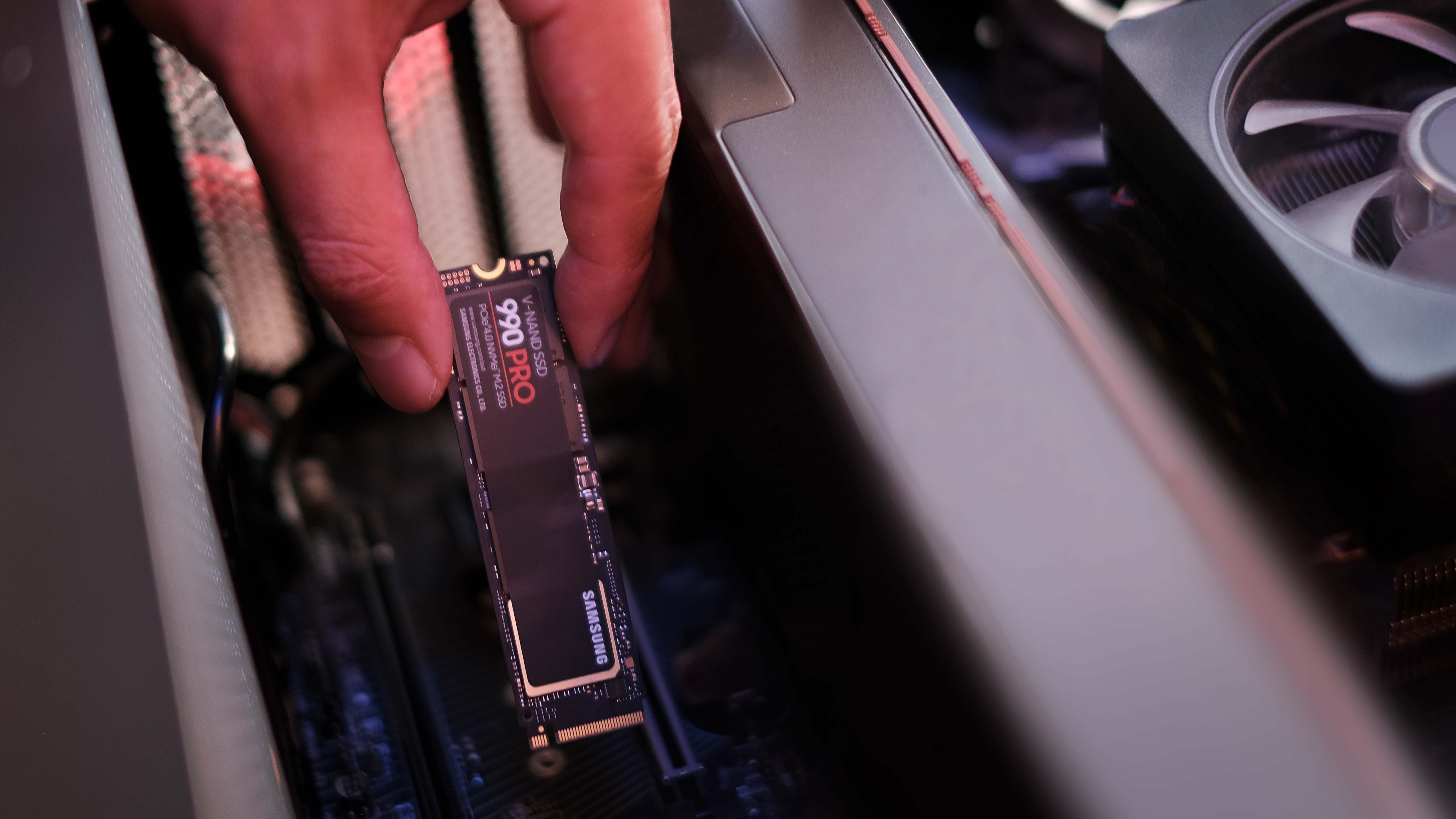
For Samsung's part, the company claimed that support for Microsoft DirectStorage API means that maps load in about one second, compared to four seconds with a SATA drive and 28 seconds with a standard hard disk drive.
| Header Cell - Column 0 | PCMark 10 (storage) | 3DMark (storage) |
|---|---|---|
| Samsung 990 Pro (2TB) | 5,042 | 4,929 |
| WD Black SN850 (2TB) | 3,812 | 4,354 |
| Kingston Renegade Fury (2TB) | 3,476 | 4,314 |
| Samsung 980 Pro (2TB) | 3,183 | 3,810 |
With the PCMark 10’s Storage benchmark score of 5,042 points, the 990 Pro is significantly ahead of its competitors. The next closest challenger is the 2TB WD Black SN850, which scored 3,812 on the same test, followed by the Kingston Fury Renegade, which got 3,476 points.
“All of this is possible thanks to the new in-house Pascal Controller,” Samsung explained of the 990 Pro’s class-leading performance. “It optimizes the data path from NAND through hardware automation technology and reduces processing time through cache algorithm.”
And the 990 Pro delivered a similar chart-topping performance with the 3DMark benchmark. In our test, we got 4,929 points for Samsung’s latest flagship drive, which is 615 points ahead of the Fury Renegade and nearly 575 points ahead of the WD Black SN850.
Samsung’s prior generation 980 Pro trailed both the WD and Kingston drives in both PCMark 10 and 3DMark storage tests. Given the level of performance that we got from the 990 Pro this year, Samsung’s latest flagship is a solid upgrade for anyone with an older drive, especially data scientists and gamers who need this level of performance.
With the 990 Pro, Samsung has gone from competent and reliable performer with the prior generation 980 Pro to a competitive beast with the 990 Pro that crushes the competition.
And speaking of Alder Lake, given Intel’s decision to support the newer Gen 5 on desktop chipsets but top out with just PCIe Gen 4 on mobile laptop CPUs, it’s much easier to forgive Samsung’s continued reliance on the older standard to ensure maximum compatibility today.
Samsung 990 Pro: Heat, thermals, and power efficiency
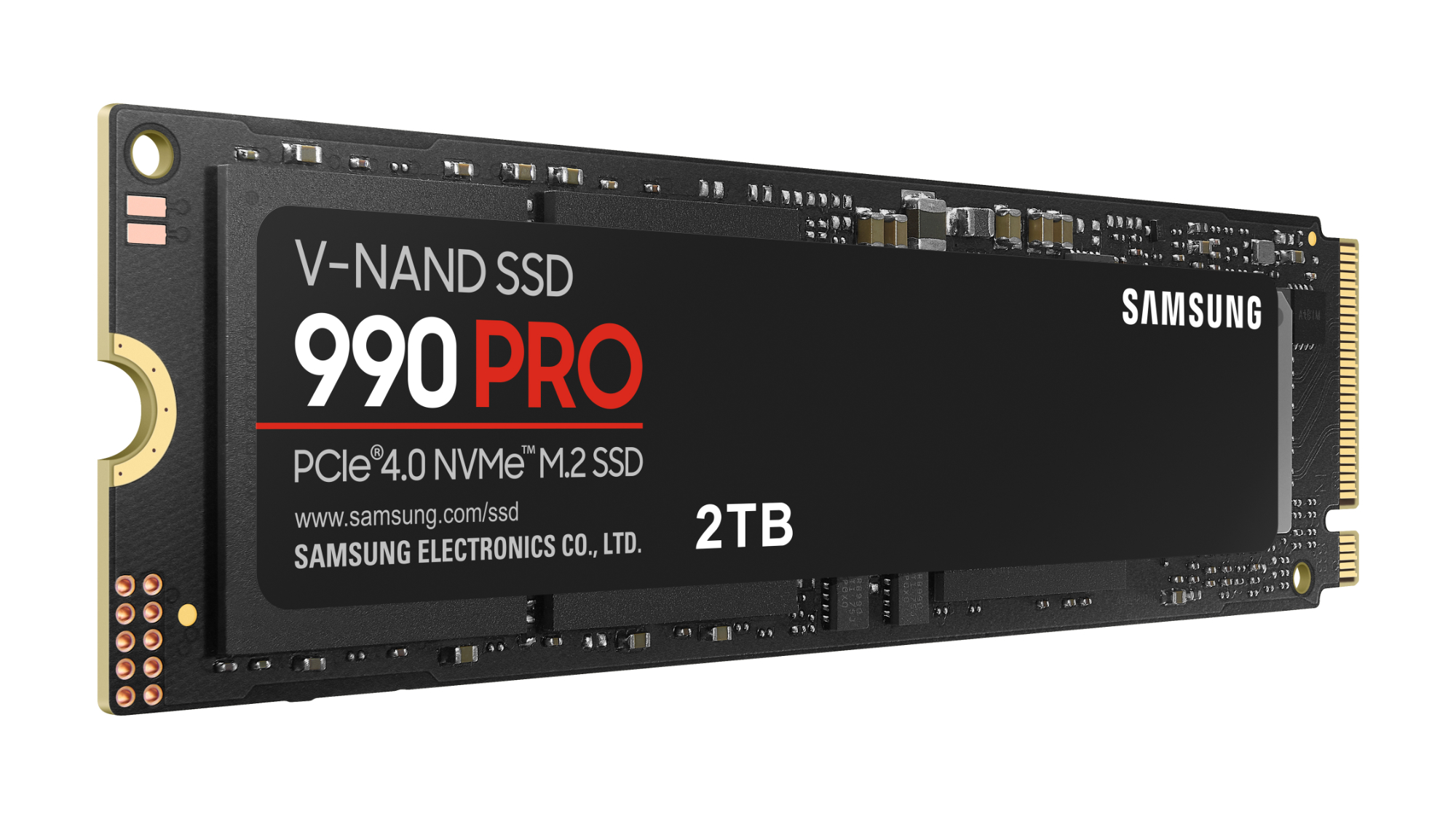
In addition to the general SSD, Samsung will also offer configurations of the 990 Pro with Heatsink that will come with RGB lighting for gamers. Gamers will be able to control the RGB lighting effects on the 990 Pro Heatsink versions using Samsung’s desktop Magician Software. We didn’t get an opportunity to test out Samsung’s 990 Pro with Heatsink as part of this review, but according to the company’s claims, you should still get similar performance with or without Heatsink.
“For an additional layer of thermal control, the Samsung 990 PRO with Heatsink meets the PCI-SIG D8 standards required for compatibility with desktops, gaming consoles, and laptops,” Samsung stated. “Easily installed in minutes, console owners can more than triple their storage capacity for games and digital entertainment, eliminating frustrations from storage space limitations. The 990 PRO with Heatsinkhas a futuristic design and RGB lights to fit the style of any gaming setup.”

The Heatsink version will also be suitable for console gamers, but unlike with PC gaming, the RGB lighting effect would be lost in the opaque console cases.
Depending on your setup, the 990 Pro delivers solid thermal management. The Asus ROG Maximus Z690 Hero WiFi motherboard on our Falcon Northwest Talon review unit comes with a heatsink bar that goes over the SSD to help passively dissipate heat, and the tower’s case design provides plenty of airflow for active cooling. With our setup, Samsung’s software detected that the heat output is just 43 degrees Celcius, or about 109 degrees Fahrenheit.
This makes the 990 Pro about 6 degrees Celcius cooler than the 49 degrees that was measured on a different test system with our 980 Pro review. Under heavy loads, temperatures rose to about 75 to 85 degrees Celcius for the 990 Pro on our Talon test sytem.
“Samsung’s Advanced Heat Dissipation Technology keeps the SSD at optimal temperature for hours of gameplay without performance degradation,” the company said.
With this year’s cooler performance on the 990 Pro, Samsung claimed to have improved the thermal management on the SSD. There’s a nickel coating on the controller as well as a heat spreader label on the backside of the drive to help improve performance of the drive.
On laptops, Samsung promises up to 50% better power efficiency with the 990 Pro. The flagship SSD uses Samsung’s new 8nm proprietary controller, which helps drive better power efficiency and should lead to better battery performance on mobile devices.
“It supports faster data processing due to lower latency, increases idle time, and reduces overall power,” Samsung said of the custom Pascal Controller on the 990 Pro.
We didn’t get a chance to test out Samsung’s power efficiency claims on mobile devices, as our test Lenovo ThinkPad Z13 uses a shorter M.2 form factor rather than the 2280 size of the 990 Pro.
In this area, Samsung’s numbers show approximately 20% better efficiency in sequential read and 50% in sequential write performance. Average power consumption was reduced by 5% gen-over-gen for the 2TB model, according to Samsung’s published test results and by about 13% for the 1TB model.
Samsung 990 Pro: The competition
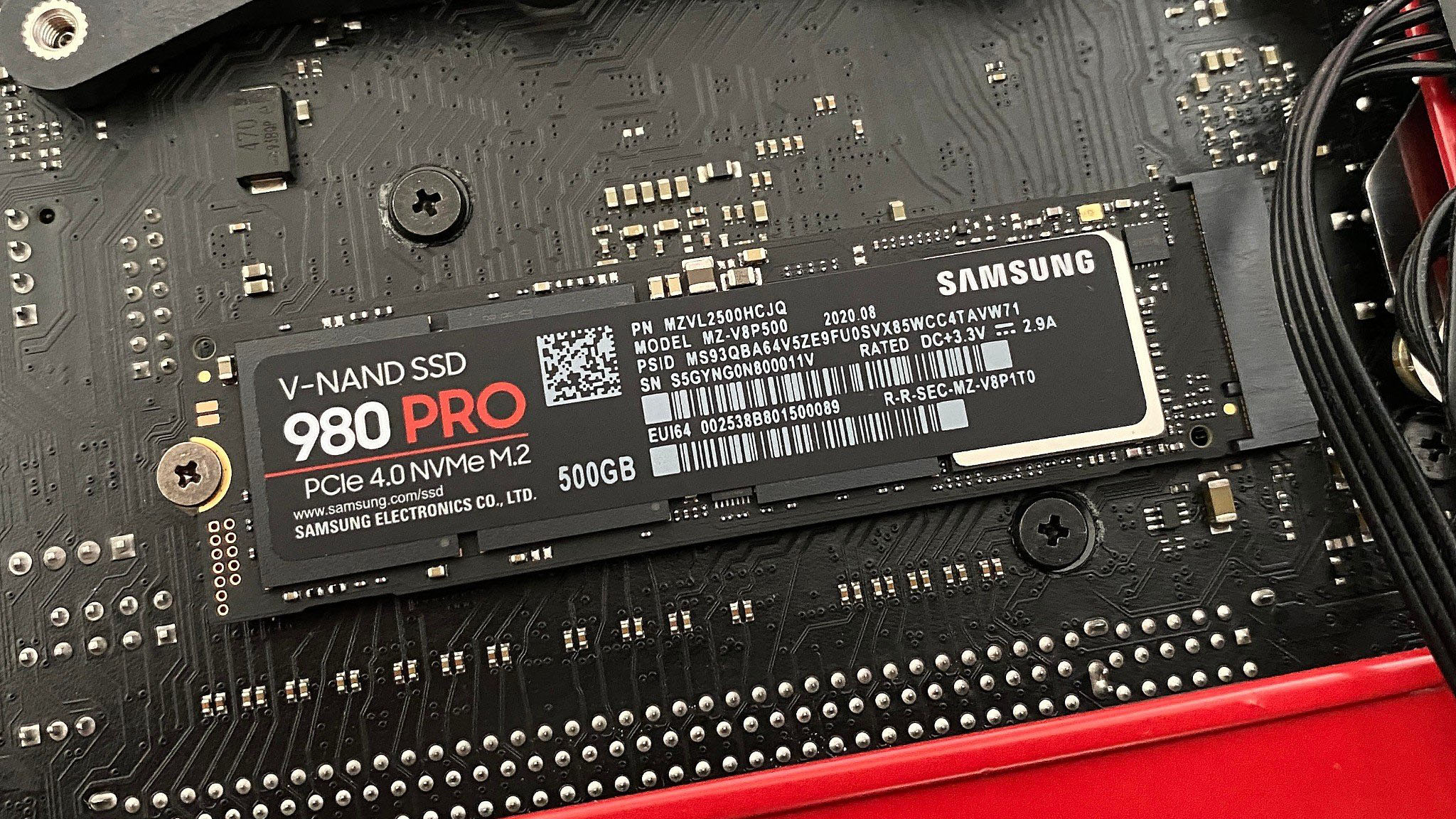
With the 990 Pro, Samsung has regained its speed crown, and this is arguably one of the fastest, if not the fastest, drives on the market today. And that’s without the company even switching to the even faster PCIe Gen 5 specifications!
One of the top contenters in this space is Western Digital’s WD Black SN850, which promises read and write speeds of 7,000 MB/s and 5,300 MB/s, respectively. Another rival is Sabrent’s Rocket 4 Plus, which is faster than the WD Black SN850 with 7,100 MB/s read speeds and 6,600 write speeds, but the Rocket 4 Plus still falls short of the sequential performance on the Samsung 990 Pro.
In terms of sheer speeds, Kingston’s Fury Renegade is perhaps the closest challenger to the Samsung 990 Pro, though the victor of this comparison will largely depend on what is more valuable to you: Kingston’s drive will have slightly slower read speeds of 7,300 MB/s and slightly faster 7,000 MB/s write speeds compared to Samsung's latest and greatest.
Samsung 990 Pro: Should you buy it?
Who it's for ...
- Gamers, data scientists, and creatives working with large files
- Workstation users
- Anyone wanting to upgrade their storage size and/or speed on their desktops or laptops that support M.2 2280 format solid-state drives
- Any PC that support PCIe Gen 4 or newer
Who it isn't for ...
- Anyone who needs the validated integrity of an enterprise drive
- Laptops or desktops that don't support M.2 2280 SSD format
With the 990 Pro, Samsung made some big updates to make its cult-favorite 980 Pro flagship solid-state drive even better. While the 980 Pro is a reliable drive that delivers solid speeds, the 990 Pro elevates that experience with performance that leaves all its rivals in the dust. Meaningful upgrades, such as a new proprietary controller and support for PCIe Gen 4, drive drool-worthy performance on this humble PC component that's worth an upgrade if you're a PC enthusiast, dedicated gamer, content creator, video editor, data scientist, or 3D modeler. The only thing holding back the 990 Pro is the drive's premium price tag compared to other PCIe Gen 4 competitors.

Samsung's 990 Pro is a solid upgrade over the prior generation 980 Pro flagship solid-state drive, delivering improvements like support for PCIe Gen 4 and a new controller that helps boost overall speeds, help manage power consumption and efficiency, and deliver better thermal management.
Chuong's passion for gadgets began with the humble PDA. Since then, he has covered a range of consumer and enterprise devices, raning from smartphones to tablets, laptops to desktops and everything in between for publications like Pocketnow, Digital Trends, Wareable, Paste Magazine, and TechRadar in the past before joining the awesome team at Windows Central. Based in the San Francisco Bay Area, when not working, he likes exploring the diverse and eclectic food scene, taking short jaunts to wine country, soaking in the sun along California's coast, consuming news, and finding new hiking trails.
